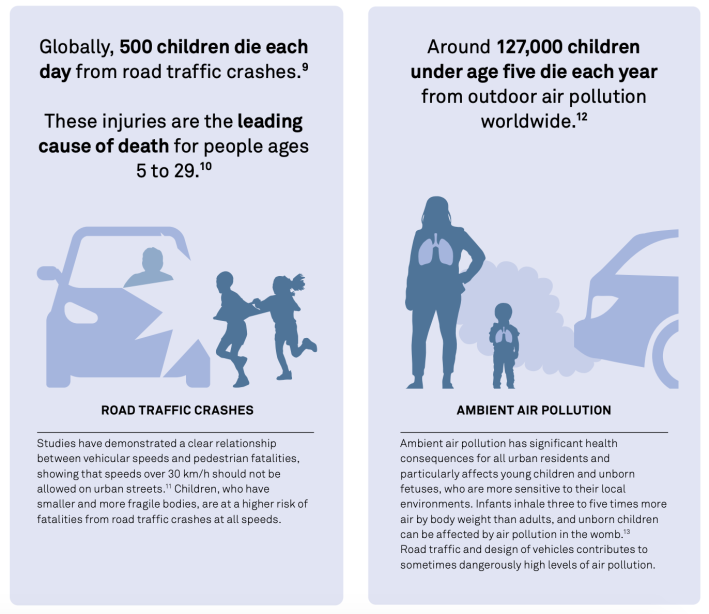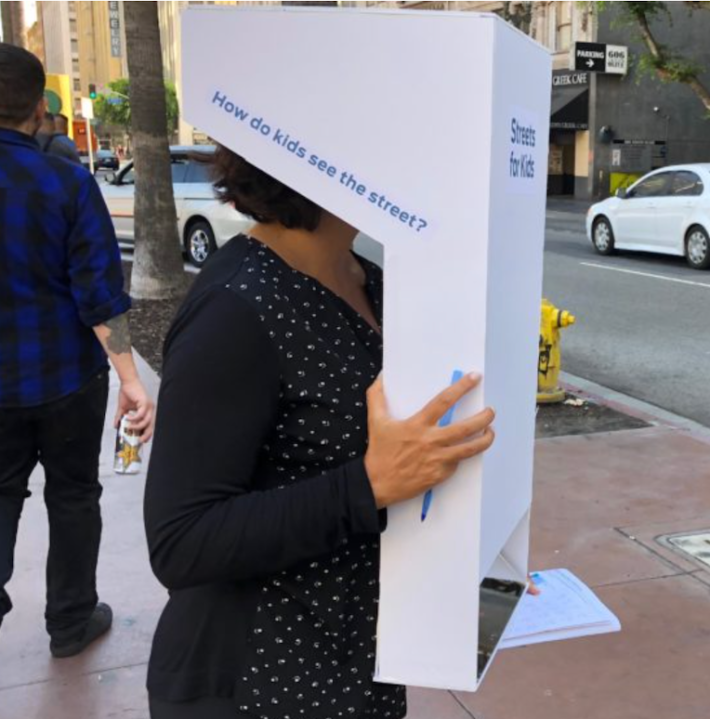Cities need to keep their youngest residents safe, healthy, and learning in their own neighborhoods, thanks to a pandemic that is putting roughly 80 percent of U.S. students on remote learning platforms — and a national group is offering a toolbox.
The Global Designing Cities Initiative, which is a program of the National Association of City Transportation Officials, released its Designing Streets for Kids guide last week — a guide long in the making, but readily applicable to the pandemic and beyond. After all, a city's transportation network isn't truly safe until it's designed with its most vulnerable populations in mind — and as the families of the 675 children who were killed and 116,000 who were injured in U.S. traffic crashes last year know all too well, kids are uniquely susceptible to the dangers of our roadways.
“If you design a street that works for kids, you’ve designed a street that works for everyone,” said Janette Sadik-Khan, the Initiative's chairperson. "Designing Streets for Kids shows how cities can lead by design to improve the quality of life for people everywhere.”
There's little data on how many schools, exactly, are keeping their school buildings closed due to COVID-19 this fall, because the Centers for Disease Control have mysteriously stopped tracking them. But new data suggests that as many as eight in 10 middle and high schoolers are spending at least part of the school week learning from home — and that number could climb even higher. Over 70,000 new COVID-19 cases were detected among school-age children in the last week of August and the first week of September alone, a phenomenon that experts say is likely to force more outright school closures over the course of the semester.
That means that a lot of America's kids may soon have to get virtually all their physical activity within their own neighborhoods — and most of those neighborhoods are designed to keep cars moving quickly rather than keeping little learners safe. Just one in five U.S. children has access to a park or other off-road, outdoor public play space, and even the average suburban backyard is shrinking as homes get increasingly larger.
Meanwhile, car crashes are the leading cause of death among children older than five, and ambient air pollution caused by automobiles kills another 127,000 children under five every year. And evidence shows a rising epidemic of gun violence (including police-perpetuated gun violence) on America's streets that disproportionately impacts children of color, rendering the outdoor realm even more unsafe for non-white kids to walk, bike, play, and learn.

The Association's guide doesn't offer much in the way of policy recommendations to protect children of color from firearm users and police brutality, but it does offer common-sense recommendations for how to protect them from another threat that may disproportionately impact non-white kids: traffic violence. More than half of the guide's recommendations are focused on disincentivizing private car use, lowering driving speeds, creating protected, accessible space for people walking (and toddling, and being pushed in strollers), and re-thinking the density of neighborhood amenities so even the smallest kiddo can feasibly get a popsicle without being strapped into the back of a minivan.
But even a street that keeps young people safe still may not succeed in meeting children's other fundamental needs: to play, learn, connect with friends and caregivers, and... yes, sometimes pause in the middle of the sidewalk to ogle a ladybug, because two-year-olds have preposterously short attention spans.
To keep kids comprehensively healthy and happy, the Initiative recommends robust protected biking (and triking, and skateboarding) infrastructure, ample temporary seating options along popular routes, and low-cost ways to activate surroundings to make them engaging for young eyes, like street art and landscaping at a variety of eye levels, as well as socially distant, kid-focused events and low-touch play structures.

NACTO notes that cities should choose their specific interventions after rigorous public engagement to determine what each unique community wants from its programs, policies, and processes. And the Association stresses that kids should be involved in this engagement, too — and gives some creative suggestions for getting quality public comment out of a kindergartner, since she probably can't sit still through a whole charrette session. (To be fair, a lot of grown-ups can't either.)
No matter what specific form a kid-friendly street ultimately takes, putting children at the center of our transportation planning decisions could benefit all our road users — big and small.
“For too long, cities have ignored children’s needs and wishes, and allowed the car to reign supreme," said Tim Gill, author of No Fear and an expert on childhood development. “The climate crisis, an epidemic of inactivity, and environmental degradation all add to the case for change. Designing Streets for Kids is a timely, comprehensive guide to creating safe, sociable streets and neighborhoods, making cities more sustainable and livable for everyone.”






